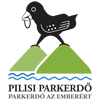
The Citadel, which can be visited today, was not the first castle to be built here. The first castle was built on the Sibrik Hill, on the foundations of the former Roman camp, which was destroyed during the Tatar invasion. The double castle system of Visegrád was built around 1250-1260 by King Béla IV and his wife, Queen Maria Laskarina, from the dowry of the queen. The castle consisted of fortified walls surrounding the hilltop, two towers and a residential palace. King Charles Robert, who later moved the capital to the castle, expanded it. During these times the castle hosted the famous Congress of Visegrád in 1335. The castle was further modernised during the reign of Sigismund of Luxembourg, when the so-called 'woman's house' was presumably also built.
The Citadel was connected to the Lower Castle by a valley wall, which extended to the Danube and ended in a watchtower. The medieval road from Esztergom to Buda, which was closed by the gate tower in the north and a gate in the south, led along the valley walls.
During the reign of King Matthias, the wings of the castle were completely renovated. Over the centuries, the castle has been home to the Holy Crown and the coronation jewels on several occasions, and Visegrád is also the site of a robbery: in 1440, Queen Elizabeth commissioned one of her courtiers, Mrs. János Kottaner, to steal the Holy Crown from the castle. Visegrád was a keeper of the coronation jewels until 1529. The castle was devastated during the Turkish occupation and fell into Turkish hands in 1544. After that, it alternated between Turkish and Hungarian troops, until finally the Turks abandoned the almost completely destroyed castle when it was no longer fit for military purposes. Not only the castle but also the town was destroyed, and it took ages to rebuild. The first efforts to restore the castle began in the early 1870s and are still ongoing today. It is worth noting that the trail map for the most beautiful panoramic road in the country, which also leads to the Citadel, was designed on the drawing board of forest engineers Károly Szabó and Zoltán Luttonszky.
Today's visitor can find several interesting exhibitions during their visit to the Citadel:
- The Holy Crown exhibition
- The exhibition on the history of the castle
- Panopticon (in memory of the Congress of Visegrád in 1335)
- Medieval arms exhibition
- Noble hunting in the Middle Ages
 Online payment is provided by Barion Payment Zrt., MNB license number: H-EN-I-1064/2013
Online payment is provided by Barion Payment Zrt., MNB license number: H-EN-I-1064/2013

 Online payment is provided by SimplePay, operated by OTP Bank.
Online payment is provided by SimplePay, operated by OTP Bank.

